Sept 22, 2008 by Maria J. Dass
THE premise that Parliament has to be called for a vote of no-confidence against the prime minister (PM) to be passed is too simplistic, said advocate and solicitor Tommy Thomas. He was responding to an interview published on Thursday in theSun with constitutional law expert Prof Dr Shad Saleem Faruqi who said that under the Constitution [Article 43(4)], it is Parliament, and not the Agong, which must dismiss the PM.
Article 43(4) of the Constitution reads: If the PM ceases to command the confidence of the majority of the members of the House of Representatives, then, unless at his request the Yang di-Pertuan Agong dissolves Parliament, the prime minister shall tender the resignation of the cabinet.
“However, for Shad’s interpretation to be correct, Article 43(4) ought to read like this: If the Prime Minister is defeated on a motion of confidence in the House of Representatives, then…” Thomas said.
If Shad’s interpretation is right, it was limited to only one occasion and one fact pattern – that the matter needs to be brought to the Dewan Rakyat, he said, adding that the broad scope of the Constitution allowed for other methods to be applied.
“I accept the method Shad mentioned as the traditional method and the first method of preference; where I am disagreeing is that it is not the only method,” he said in an interview last Friday.
He said Article 43(4) represented the Reid Commission report draft and maintained its original form and essentially codified the British Constitutional principle that awards the Agong the exact same powers as the British monarch has. He said nearly all Commonwealth countries had persons who were in similar positions to the British monarch and had the same powers. India, being a republic, has a president while Australia and New Zealand have governors-general to represent the Queen.
So what are the other methods instead of a no-confidence vote?
Thomas: To answer this we have to first look at the fact that in almost every Commonwealth nation, there is a supreme head, a constitutional monarch. In Malaysia, it is the Agong as stipulated in Article 32(1) of the Federal Constitution. This supreme head has to be above politics and serve the role of stabilising the nation, especially in a time of crisis like this.
Article 43(2)(a), which states that the Yang di-Pertuan Agong shall first appoint PM to preside over the cabinet a member of the House of Representative who in his judgment is likely to command the confidence of the majority of the members of that House, leaves the discretion of appointing the PM to the Agong.
The King has to take the advice of the PM 99.999% of the time according to Article 40(1); however the Agong may act in his discretion to appoint the PM and to withhold the consent to a request for the dissolution of Parliament according to Article 40(2).
In some situations he doesn’t take the PM’s advice because the advice may be self-serving. In the case where a PM does not enjoy the support of the majority, his self-serving advice may be to “keep me, don’t sack me”.
So in these situations and in times of trouble, the King should look above the advice and speak up in the interest of the nation.
As a constitutional monarch, the Agong cannot remove the PM unless he is convinced that the PM has lost the confidence of the majority of Dewan Rakyat members as stipulated in Article 43(4) and 40(3).
If the events in 43(4) occur, then the PM can be dismissed if he doesn’t resign.
The provisions in the Constitution give the King a very broad discretion, but he cannot act as a dictator as there are restraints to his absolute discretion. For example, he cannot appoint you or me to be PM because of the simple reason that we are not members of the lower house. That tells you straight away that the choice is limited to 222 people.
How does the King exercise his discretion if there is no vote of no-confidence?
A written and signed declaration signed by the majority members of the lower house, where if a member/members of Parliament sees him and produce documents to show that more than the majority needed have signed a declaration of no confidence.
If the King is satisfied with that and genuineness of the signatures, then he can accept that – the method of ascertaining the losing of confidence.
Now this is where I must comment on Shad’s statement where he cited the Stephen Kalong Ningkan case (1966) where the High Court in Kuching refused to accept this method.
What Shad failed to mention was a Privy Council case before (Nigerian case: Adegbenro vs Akintola in 1963) and a Malaysian case after which went the other way.
In the Nigerian case, the governor of Nigeria received such a letter and based on this he sacked the Chief Minister (CM) but the CM said “there was no vote against me so I have not been sacked”.
The Privy Council ruled that it was a genuine sacking and decided that the governor can do what he wanted because of his wide discretion.
In 1966 Justice Harley in Kuching in his judgment on the Stephen Kalong Ningkan case said he won’t follow the Nigerian case because Nigeria is different from Sarawak – which in my view is a very simplistic view.
Then 30 years later, we had this case involving Datuk Amir Kahar Mustapha vs Tun Mohd Said Keruak – which involves former chief minister of Sabah Datuk Joseph Pairin Kitingan when there were several defections from the party after the 1994 general election and Kitingan lost his position. The appointment of the new governor was later challenged. The facts are very similar and the issue raised was whether a signed letter cum document could be accepted. Justice Kadir Sulaiman followed the Privy Council method and said of course.
What is more interesting is the winning lawyer whose arguments were accepted by Kadir Sulaiman was none other than present Attorney-General Tan Sri Gani Patail, who was arguing for the state government of Sabah.
The disadvantage of this method is the authenticity of the signature, thus the whole idea is proof that the King is acting reasonably and responsibly, not arbitrarily. Therefore, the King has to make his own investigations and satisfy himself and make known the steps which he took in making the decision for the whole country. To do this the King should summon them, whether he does this or they voluntarily go then this is the best evidence, best proof. If any constitutional monarch did this, then they can be absolutely above criticism.
The King’s say in removing the PM
Scenario One:
A vote in the lower house takes place and motion is carried. Then the outgoing PM must inform the monarch that he has lost the confidence of the house. The PM then has a prerogative to ask for the dissolution of Parliament so that fresh elections can be held for him to test his mandate with the people.
The King then has to use his discretion at this stage. If he accepts, Parliament will be dissolved and the PM’s government will be appointed as a caretaker government. But if the King says no to dissolve Parliament, the PM must tender his resignation to cabinet. If he refuses to resign, it is implied that the King can sack him.
Scenario Two:
The King does not rely on a motion in the house but upon being satisfied that the PM no longer enjoys the support of the majority in the house, tells the PM to resign and replaces him with a candidate which he sees fit. If the PM refuses, it is implied in the Constitution that he can be sacked.
What happens if a motion of no confidence is not granted by the Speaker of the Dewan Rakyat?
This is unconstitutional. But this is precisely why scholars are arguing if this is the only method or if there are other ways of doing this. Opposition Leader Datuk Seri Anwar Ibrahim is playing a very careful game where he is exhausting the first and preferred method of tabling a no confidence vote against the PM first. Two such motions have been tabled and disallowed by the Speaker so far.
What happens if Anwar is detained under the Internal Security Act?
Even if Anwar is detained under the Internal Security Act, the King can ask for him to be released to meet him – if he sees him as a person qualified as prime ministerial candidate
Subscribe to:
Post Comments (Atom)
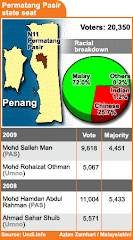

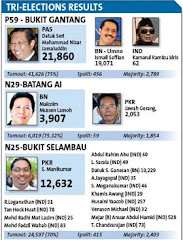



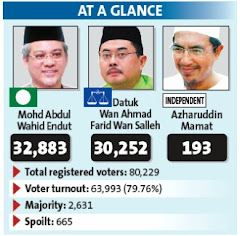







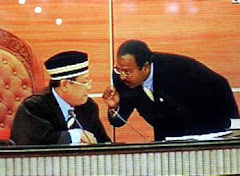


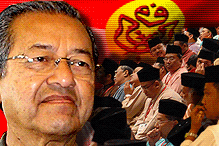


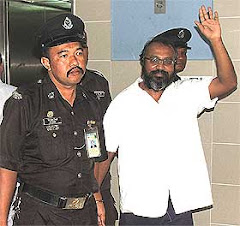



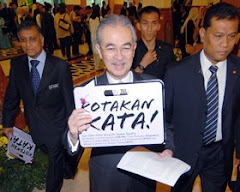

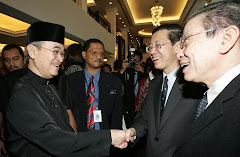






No comments:
Post a Comment